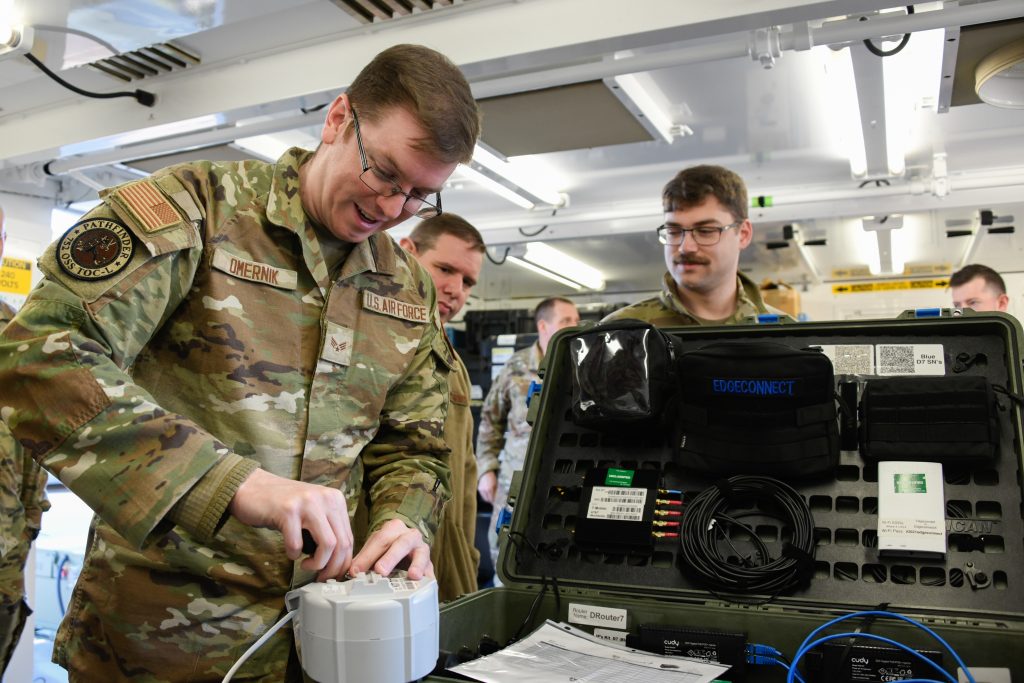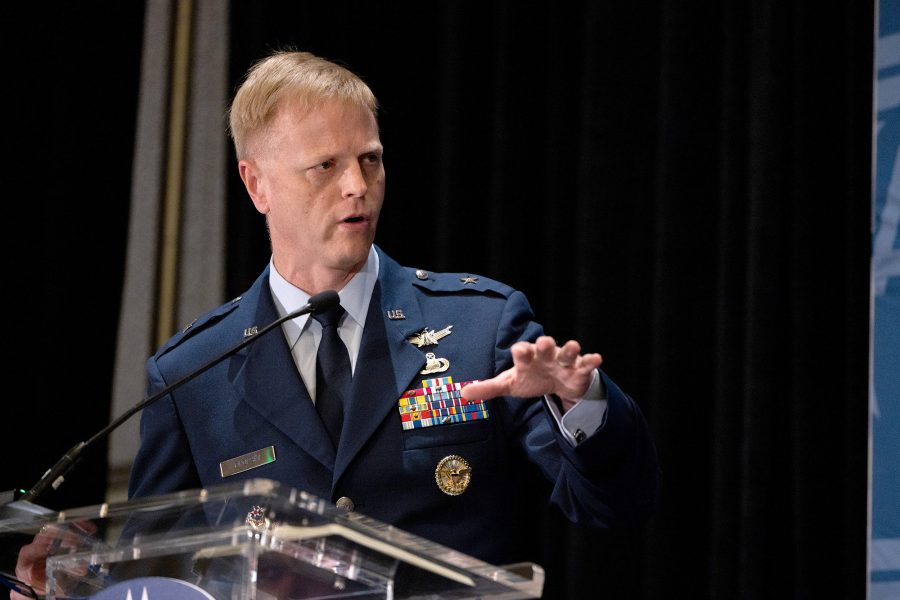NATIONAL HARBOR, Md.—The Department of the Air Force will be taking over the Pentagon’s prototype Joint Fires Network, or JFN, as it transitions to a fully fledged program of record, program executive officer for command, control, communications, and battle management Maj. Gen. Luke C.G. Cropsey told reporters Sept. 18.
“I will have the budget and acquisition authority to actually execute the program,” he told a media roundtable on the sidelines of AFA’s Air, Space & Cyber conference.
JFN is currently a technology demonstration under U.S. Indo-Pacific Command—an IT platform linking warfighters on land, sea, and in the air with surveillance assets and weapons systems across the region, providing a common situational picture of enemy threats and allowing them to be remotely targeted.
Cropsey’s remarks followed an announcement earlier in the week from Air Force Secretary Frank Kendall, who said the Pentagon has designated the Air Force as the “executive agent” on the program. This move “recognizes both the progress we have made to date, and the value of achieving integration of JFN and the [DAF Battle Network],” he said.
The DAF Battle Network is the latest iteration of the Air Force’s long-developing, ambitious attempt to create a network of systems and capabilities connecting sensors and shooters around the world. It’s also the service’s contribution to Combined Joint All-Domain Command and Control, or CJDAC2, the Pentagon’s vision of future wars fought seamlessly across all five domains of conflict—land, sea, air, space, and cyberspace.
Cropsey’s office is responsible for procuring the systems that will go into the DAF Battle Network. Now he’ll be responsible for folding JFN into the mix. JFN is effectively a prototype of the kind of capability that will be ubiquitously available to U.S. warfighters once CJADC2 becomes reality.
JFN is currently run by the Office of the Undersecretary of Defense for Research and Engineering, Cropsey said, but involves “a large number of players,” including the Defense Information Systems Agency, the DOD’s chief data and artificial intelligence officer, the Defense Innovation Unit, the Navy, and INDOPACOM.
“We’ve been designated as the lead … that will bring those other pieces together and turn that [JFN] into a sustainable capability over time,” he said.
The problem set, he added, is figuring out “what would it look like for us to do a hot handoff of what they’re doing … currently, and make sure that that effort works at speed and at scale,” he said.
“We’re working [with the Office of the Undersecretary of Defense for Research and Engineering] on a transition plan now.”
Initially, the fully fledged JFN program would be deployed in the INDOPACOM area of responsibility, he said, but eventually “we’re creating a capability that we can then build off of and expand to the other [combatant commands].”
Cropsey also touted progress his office was making with other elements of battle management, saying the Cloud-Based Command and Control, or CBC2, system he promised last year to deploy had been rolled out earlier in the year, along with a hardware component, the Tactical Operations Center-Light, or TOC-L, that will enable frontline units to use it.
“It’s out. It’s running. They’re using it. It’s active,” he said of CBC2, acknowledging that work was ongoing. “These software-defined, hardware-enabled kinds of programs are never really done, right? You’re in continuous integration, continuous development all the time.”
As for TOC-L, he said 16 had been delivered and “the teams are operationally beating the snot out of them right now. And they’re doing that intentionally so that we can understand better … what works and what doesn’t work. And then we’re going to fold that immediately into the next iteration of those [TOC-L] kits.”
Next year, Cropsey added, “we’re going to get busy starting to push them [TOC-L kits] out at scale.”

